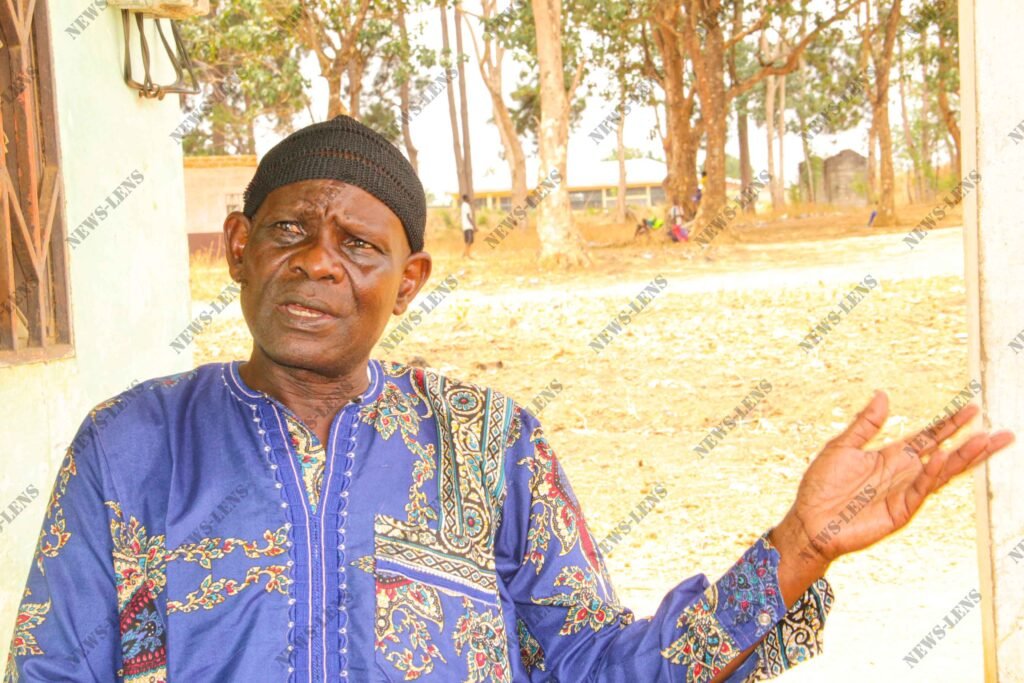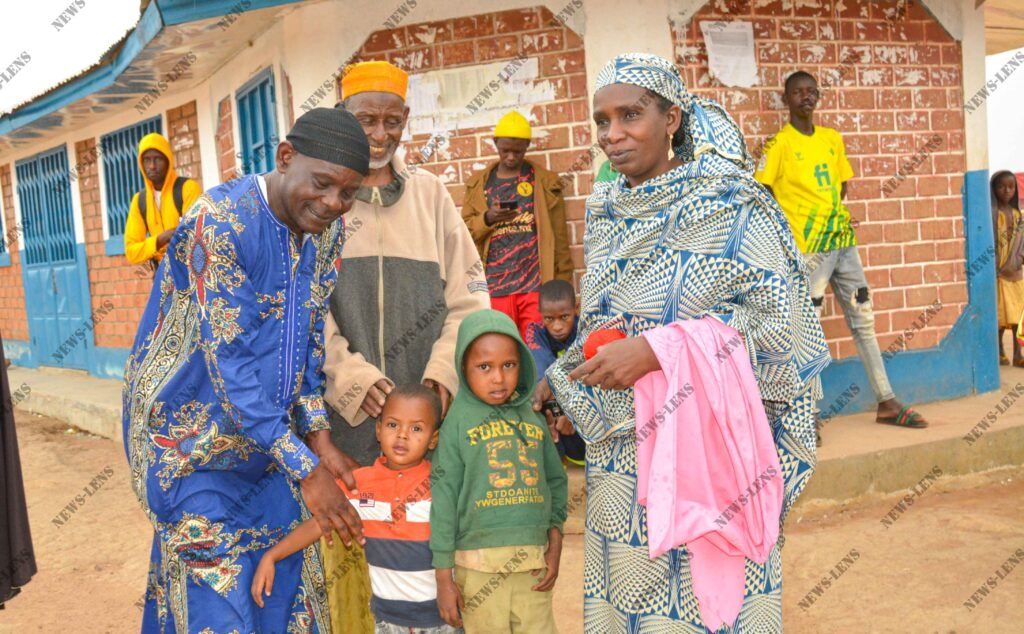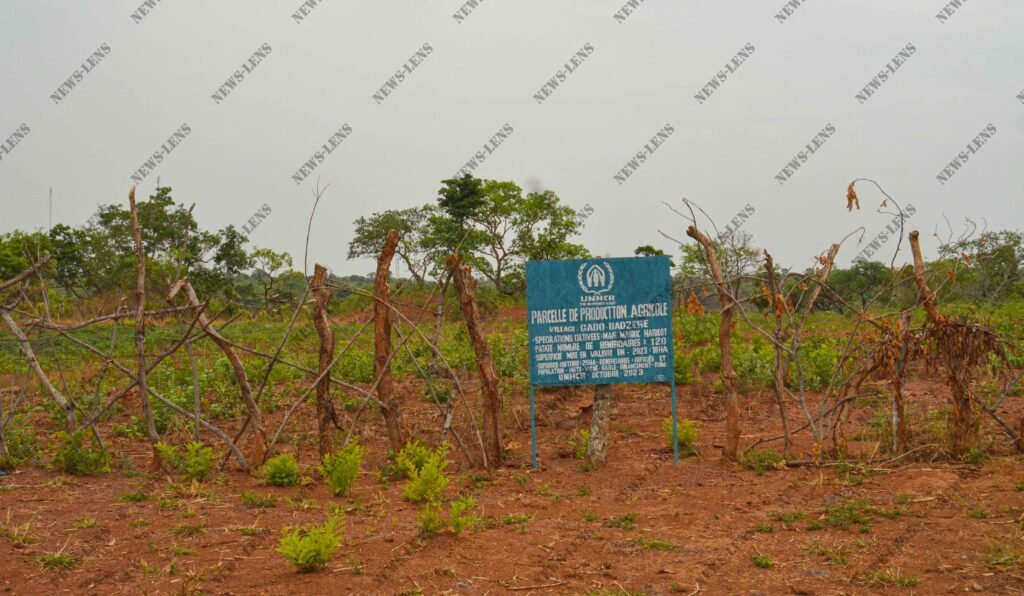By Etienne Mainimo Mengnjo
It has been a long and sunny day at Gado-Badzere, a vibrant village situated in the Lom and Djérem Division in the East Region of Cameroon. The village serves as a sanctuary for approximately 26,000 Central African Republic (CAR) refugees, all residing on a sprawling 60-hectare expanse of land.

Throughout the day, the village has been busy with a multitude of activities, ranging from educational quests to bustling market transactions and diligent agricultural work. As the golden ball of the sun begins its descent, typically around 6 pm, the women of the village make their way back from the fertile fields, while the energetic children hurry to fetch water for their families.
The entire community springs to life with the onset of evening responsibilities, as the sounds of animated conversations in languages such as French, English, Fulfulde, and various local dialects echo through the air.
In the backdrop, one can spot a camp sheltering not only the 26,000 refugees from CAR but also a significant number of Internally Displaced Persons (IDPs), underscoring the resilience and unity of this diverse and interconnected community. A closer look reveals the hardships these individuals have faced, yet their stay in Gado-Badzere has provided them with hope and a chance to contemplate their future.
Leading the charge towards integrating these people and bringing smiles to their faces is Chief Martin Sodea Azia, traditional village head of Gado-Badzere. Alongside the village locals, Chief Azia has facilitated a peaceful stay for the refugees in the village.

Beyond Chief Azia’s hospitality, he actively supports the seamless integration of refugees into the local community. With unwavering determination, he ensures that displaced families find sustainable livelihoods by allocating arable land and providing educational opportunities for their children.”
“In the beginning, it wasn’t easy,” Chief Azia said, indicating that, “Together with the population and the authorities, we welcomed them and opened our doors, showed them where they should settle, and the UNHCR constructed tents.”
Chief Azia also mentioned that amidst the trauma of war, children arrived the village alone, women who had lost their husbands, men who had lost their wives and children, all seeking refuge were all accepted with open arms.
“What we eat, we ate together and lived together. All of that was under my command and guidance. Each time there is a problem, they would refer it to me, and through the different services, the committee that we put in place worked tirelessly for peace to prevail,” Chief Azia stated.
With some members having married individuals from the village and many locals having also married into their community, forming bonds and families, Chief Azia expressed his heartfelt sentiments, “It is very difficult and heartbreaking to see them leave.”
He continued, “At the hospital, they share the same bed, and in school, our children attend classes together, play together, work on the farm together, and even frequent the same markets. It is truly painful to bid them farewell, but we earnestly pray to God for peace to be restored in their homeland, so that our beloved brothers and sisters can return and resume their lives in tranquility.”
Djawara Djoumani, a mother who has been in the camp for four years after losing her husband and three children in the CAR crisis, praised the support received in Cameroon especially at Gado-Badzere, though recent months have brought challenges in accessing food and healthcare.
Ndoti-Djo Ismail, another long-term refugee, highlighted the effective problem-solving approach under the current chief, with a committee comprising both natives and refugees promoting peaceful coexistence and collaboration with partners.

The United Nations High Commissioner for Refugees (UNHCR) has praised Chief Azia’s innovative approach as a beacon of hope for refugees living in Gado-Badzere village. According to UNHCR, Chief Azia’s ground-breaking efforts have not only provided much-needed support but have also stirred positive change in the lives of those seeking refuge.
Some refugees and internally displaced persons (IDPs) have chosen to return to their homes voluntarily, despite facing uncertainty. However, there are others who have opted to remain in Cameroon, citing pockets of insecurity and the fact that their property had been destroyed.
Cameroon is facing multiple humanitarian crises, impacting over 1.5 million people who have been forced to leave their homes, along with 600,000 individuals who have returned after being displaced internally. This includes around 500,000 refugees and asylum seekers, mainly from the Central African Republic and Nigeria.
Furthermore, more than one million internally displaced persons are struggling in the North West and South West Regions due to conflicts and other challenges. Factors such as non-state armed groups, severe weather conditions, and limited resources caused by climate change in the Far North region have worsen the situation for those affected by Boko Haram insurgence.